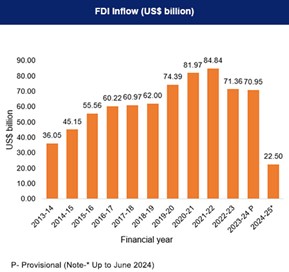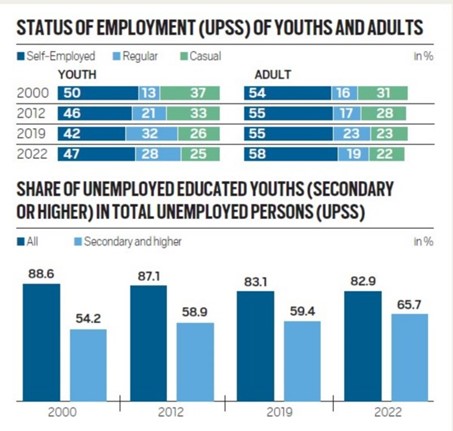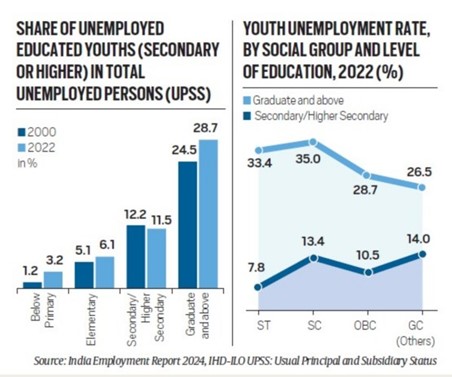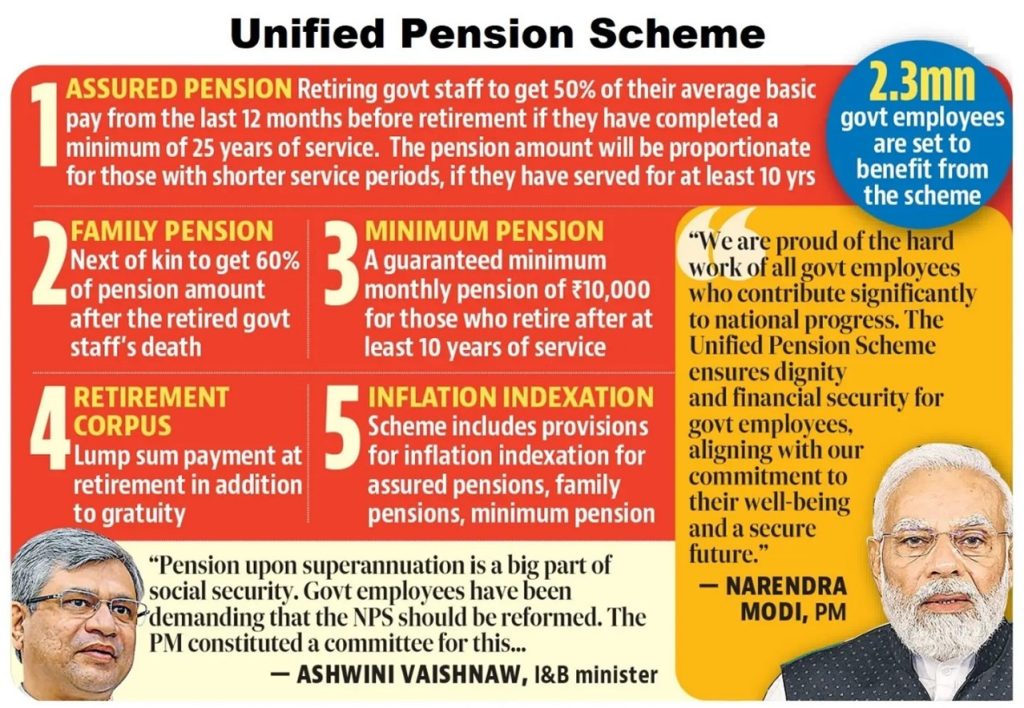Contents:
- A Legal Void: India Needs a Dedicated Law to Deal with National Security Risks from FDI and Trade
- The Elusive Jobs
A Legal Void: India Needs a Dedicated Law to Deal with National Security Risks from FDI and Trade
Context: The editorial discusses India’s lack of a comprehensive legal framework to address national security risks associated with foreign direct investment (FDI) and international trade. Despite the growing influx of FDI, especially from China, India lacks robust legislation to screen investments on security grounds. The article compares India’s legal shortcomings with measures taken by other countries, like Canada and Australia, especially during the COVID-19 pandemic.
Relevance: General Studies Paper 2 (Governance) and General Studies Paper 3 (Economic Development)
Mains Question: Examine the need for a dedicated legal framework to address national security concerns related to foreign direct investment (FDI) in India. Discuss global best practices in this regard. (250 words)



- The Issue:
India faces a gap in legal mechanisms to screen FDI on national security grounds. While FDI brings economic benefits, it also carries potential security risks, particularly when it comes from countries with which India has tense relations, like China. - Pandemic and Press Note 3 (PN3):
In April 2020, during the pandemic, India issued Press Note 3, requiring government approval for FDI from countries sharing land borders with India, primarily targeting Chinese investments. However, this note did not address security risks but focused on economic concerns like opportunistic takeovers of Indian companies weakened by the pandemic. - Comparison with Other Nations:
Countries like Canada and Australia enacted specific legal provisions to limit Chinese FDI during the pandemic due to security risks. For example, Canada’s Investment Act allows screening of FDI that could harm national security. - India’s Legal Gaps:
India lacks explicit provisions to screen FDI for national security concerns. The Foreign Exchange Management Act (FEMA), India’s key FDI regulation, primarily deals with managing foreign exchange and lacks provisions for national security screening. - Global Trade and Security Risks:
The legal vacuum is not limited to FDI. India also lacks comprehensive legal frameworks to deal with trade issues that may pose security risks. Post-Pulwama, India denounced certain WTO obligations, but these actions remain reactive rather than part of a strategic legal framework. - Recommendations:
India needs to develop a law that explicitly addresses FDI and trade-related national security risks. This could include screening mechanisms like those in other nations and clearer definitions of what constitutes a national security risk. India could also adopt global best practices and tailor them to its specific geopolitical concerns.
Latest Data and Numbers:
- In 2020, India restricted FDI from neighbouring countries, affecting mainly Chinese investments.
- Global FDI inflows in India amounted to around $83 billion in 2021, with increasing scrutiny needed for security risks.
Conclusion:
India’s current legal framework is insufficient to address national security risks from FDI and trade. As foreign investment continues to grow, particularly from adversarial nations, India must develop specific legal provisions to safeguard its national interests. Adopting a dedicated law would align India with global practices and ensure that economic growth does not compromise national security.
India should take proactive steps to establish a legal structure addressing national security in FDI and trade, especially in a rapidly globalizing world.
The Elusive Jobs
Context: Despite India’s strong economic growth projections, concerns over the lack of quality jobs persist. The latest periodic labour force survey highlights the state of employment in India, focusing on labour force participation, informal employment, and the shifting nature of the job market.
Relevance: General Studies Paper 3 (Economic Development and Employment)
Mains Question: Examine the recent trends in India’s labour market as per the Periodic Labour Force Survey. Discuss the challenges in creating remunerative and productive job opportunities. (250 words)


- Labour Force Participation:
The overall labour force participation rate for people aged 15 and above has increased from 49.8% in 2017-18 to 60.1% in 2023-24. This growth is largely driven by higher female participation, especially in rural areas, where the rate rose from 24.6% to 47.6% during the same period. However, this may reflect economic distress, pushing more women into the workforce without substantial income. - Rise in Self-Employment:
A significant shift is observed in the nature of employment. The share of women engaged in salaried jobs has decreased, while self-employment has surged. The percentage of self-employed women increased from 51.9% in 2017-18 to 67.4% in 2023-24, mostly as unpaid workers in family businesses or as own-account workers. This indicates a lack of formal job opportunities. - Informal Employment:
The proportion of workers employed in informal enterprises remains high, with 73.2% of the workforce in informal jobs in 2023-24, slightly down from 74.3% in the previous year but higher than 68.2% in 2017-18. - Sectoral Shifts:
Employment in the farm sector has declined, from 44.1% in 2017-18 to 46.1% in 2023-24. Manufacturing employment has remained stagnant, with only a marginal increase from 11.6% in 2021-22 to 14.4% in 2023-24. The agricultural sector still dominates, but the industrial sector’s inability to absorb the growing workforce is concerning. - Unemployment Rate:
The unemployment rate has improved, falling from 6% in 2017-18 to 3.2% in 2023-24. However, the youth unemployment rate remains a concern, especially for educated individuals. In 2023-24, unemployment was higher for those with secondary education and above.

Conclusion:
The data underscores the pressing challenge of creating quality jobs. While labour participation is up, much of the employment remains informal or self-employed. Addressing this requires concerted efforts to create formal, remunerative jobs, particularly in the manufacturing sector. As the India Employment Report 2024 indicates, capital-intensive and labour-saving technologies further complicate the situation. Therefore, job creation needs to be a priority in India’s economic agenda.
An Opportunity to Rethink India’s Pension System
Context: India’s pension system has evolved through three major schemes: the Old Pension Scheme (OPS), the New Pension Scheme (NPS), and the proposed Unified Pension Scheme (UPS). Each system impacts retirees differently, with the NPS exposing retirees to market risks, while the OPS provided greater financial security. The global shift toward welfare policies amid economic uncertainties brings focus on the need to reform India’s pension system, particularly the UPS, to ensure inclusivity and reduce the financial risks faced by retirees.
Relevance: General Studies Paper 2 (Governance, Social Justice, Welfare Schemes) and General Studies Paper 3 (Economic Development, Social Security, and Pension Reforms).
Mains Question: Examine the evolution of India’s pension system from the Old Pension Scheme (OPS) to the New Pension Scheme (NPS) and the proposed Unified Pension Scheme (UPS). Discuss the challenges and benefits associated with each scheme.” (250 words)

- Old Pension Scheme (OPS):
The OPS, prevalent before 2004, offered a defined benefit pension to government employees, guaranteeing financial stability by basing pensions on the last drawn salary. Retirees were insulated from market risks, ensuring a steady post-retirement income. The government bore the entire responsibility for disbursing pensions. The OPS was seen as a social security measure that aligned with welfare-oriented policies. - Shift to New Pension Scheme (NPS):
In 2004, the government introduced the NPS, shifting from a defined-benefit to a defined-contribution model. Employees and the government contributed to a pension fund, which was then invested in financial markets. This shift exposed retirees to market risks and uncertainty, as pension returns were tied to market performance. The NPS was criticized for weakening the social safety net and transferring financial risk to individuals. - Proposed Unified Pension Scheme (UPS):
The UPS seeks to address some of the shortcomings of the NPS by offering a universal framework for pension security. However, concerns remain about the level of government contribution and its reliance on market forces. The UPS must ensure inclusivity across all sectors, including informal labour, which currently lacks adequate pension coverage.

- Global Trends Toward Welfare:
As the global economic model shifts away from neoliberalism, countries are witnessing a return to welfare-oriented policies, emphasizing social security. The COVID-19 pandemic amplified the need for state intervention to ensure financial stability for retirees. India, facing similar demands, must strike a balance between state-backed pensions and market-driven models. - Challenges with the UPS:
The UPS may not fully mitigate market risks or provide guaranteed financial security, similar to the OPS. Ensuring wider inclusivity, especially for informal workers, and addressing the need for a guaranteed minimum pension, are key concerns. The UPS also needs to expand beyond government employees to provide pension security for all citizens.
Latest Data and Numbers:
- As of 2024, the NPS covers millions of government and private sector employees.
- India’s informal sector, comprising nearly 90% of the workforce, lacks pension coverage under both OPS and NPS.
Conclusion:
India’s pension system needs urgent reform to align with global trends toward social welfare. The UPS, if designed well, could offer a balanced solution that combines market participation with state responsibility. To protect retirees from market volatility and ensure financial security, the government must prioritize pension reforms that guarantee a minimum income, similar to the OPS, while broadening coverage to include all sectors.
Reforming the pension system is critical to ensuring financial security for future retirees and addressing India’s evolving economic landscape.




